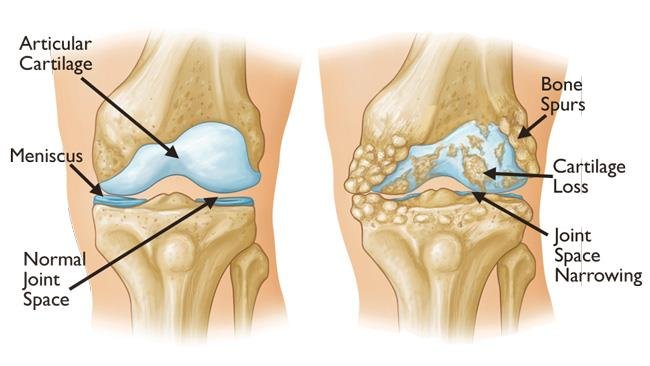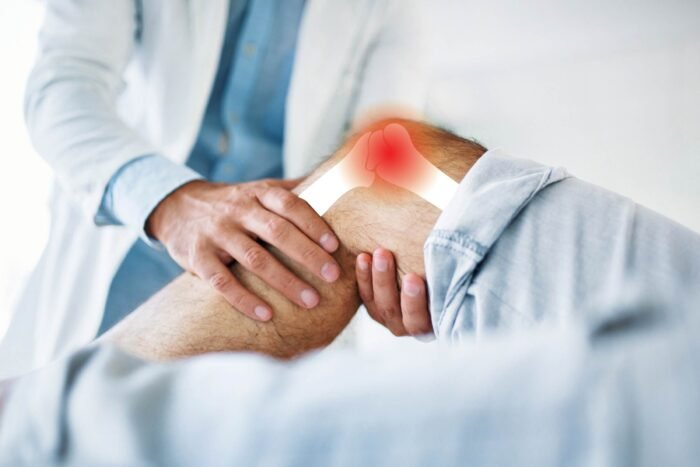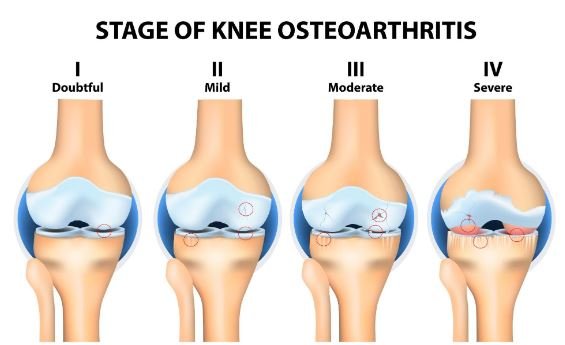Knee osteoarthritis is a common condition that affects many people, leading to severe pain, difficulty in walking, and sleep disturbances. Patients often come to the outpatient department (OPD) with complaints of knee pain, crooked knees, and an inability to participate in social activities due to their condition. They have typically undergone X-rays and have been informed that their knees are completely worn out, necessitating surgery. Patients frequently ask whether they need surgery, whether a partial or complete knee replacement is required, and if advanced technologies like computer navigation or robotic assistance will be used.

What Does It Mean When a Knee is “Worn Out”?
For a layperson, understanding knee osteoarthritis involves knowing three key components:
- Cartilage: This is a layer of grease that acts as lubrication inside the knee, preventing friction. When this layer wears out, the bones rub against each other during movement, causing pain and discomfort. This condition is referred to as the knee being “worn out.”
- Meniscus: These are two blue, crescent-shaped structures that cushion and stabilize the knee joint. If the meniscus tears, it can cause the knee to lock or get stuck, often leading to further complications.
- Ligaments: There are two main ligaments inside the knee – the posterior cruciate ligament (PCL) at the back and the anterior cruciate ligament (ACL) at the front. Younger individuals often experience issues with the meniscus or ligaments, while older adults typically suffer from worn-out knees due to osteoarthritis. When the knee is completely worn out, it is referred to as advanced osteoarthritis, necessitating surgical intervention.
Also Read: FAQs on Robotic Knee Replacement Surgery
Surgical Options for Knee Osteoarthritis
When it comes to surgery, the approach depends on the extent of the wear:
- Partial Knee Replacement: If only one side of the knee is worn out, a partial knee replacement is performed. This involves replacing only the damaged part of the knee, preserving the ligaments, and allowing for a more natural knee movement. This type of surgery often results in higher patient satisfaction as it enables activities like sitting cross-legged.
- Complete Knee Replacement: A complete knee replacement is necessary when the entire knee is worn out. However, it is important to note that the entire knee is not replaced. Instead, a cap is placed over the worn-out part.
What Sets Dr. Vivek Mahajan Apart at the Indian Spinal Injury Centre for Knee Osteoarthritis
At the Indian Spinal Injury Centre, Dr. Vivek Mahajan employs a unique approach to knee replacement surgery. Traditionally, knee surgery involves cutting the muscles to access the knee joint. However, Dr. Mahajan uses a muscle-sparing technique, where the muscles are moved aside rather than cut. This technique, coupled with robotic assistance, leads to several benefits:
- Reduced Pain and Faster Recovery: Muscle-sparing surgery results in less pain, reduced need for physical therapy, and minimal blood loss. Patients can stand and walk within 24 hours after the operation, and they are discharged once they can climb and descend stairs.
- Precision and Perfection: While the surgeon operates, the robot assists in executing the surgery with precision. This ensures that the knees are straightened perfectly, facilitating quick rehabilitation and optimal outcomes.
Dr. Vivek Mahajan’s use of robotic technology ensures that the surgery is performed with the highest degree of accuracy, leading to better patient outcomes and faster recovery times.
FAQs on Knee Osteoarthritis:
Q1: What are the symptoms of knee osteoarthritis?
A1: Dr. Vivek Mahajan explains that common symptoms include knee pain, stiffness (especially in the morning or after sitting for a long time), swelling, reduced range of motion, and a feeling of the knee giving way or locking.
Q2: How can knee osteoarthritis be prevented?
A2: Dr. Vivek Mahajan advises that prevention strategies include maintaining a healthy weight, staying active with low-impact exercises, avoiding joint injuries, and ensuring proper joint alignment.
Q3: Are there non-surgical treatments for knee osteoarthritis?
A3: Dr. Vivek Mahajan states that yes, non-surgical treatments are available and include physical therapy, weight management, braces or orthotics, pain relievers, anti-inflammatory medications, and intra-articular injections. The best treatment option depends on the patient’s specific situation.
Conclusion:
Knee osteoarthritis is a debilitating condition that often requires surgical intervention. Understanding the components of the knee and the available surgical options can help patients make informed decisions about their treatment. Dr. Vivek Mahajan’s innovative approach at the Indian Spinal Injury Centre, utilizing muscle-sparing techniques and robotic assistance, offers patients a path to quick recovery and improved quality of life.



